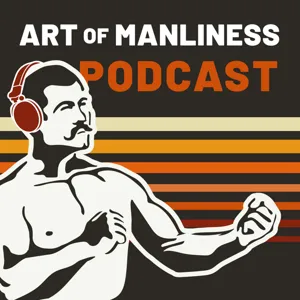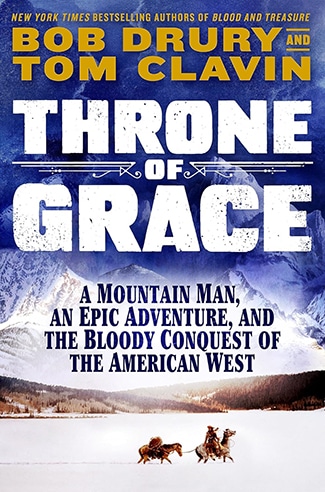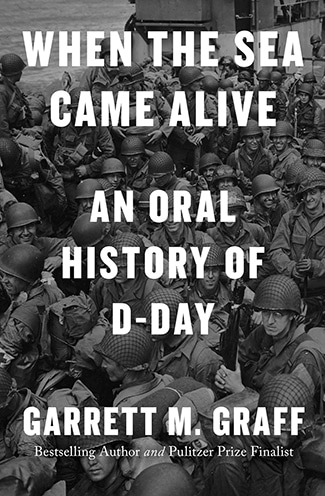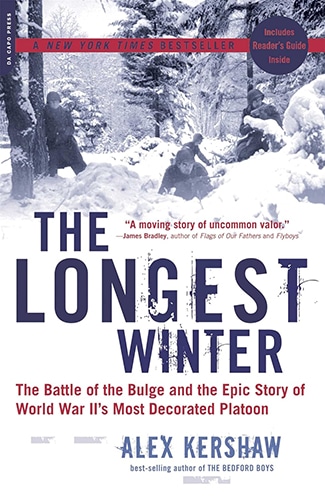Podcast Summary
Jimmy Stewart's Military Career: Untold Stories: Beloved actor Jimmy Stewart served in the military for four years during WWII, saw combat, and continued service after the war, retiring as a Brigadier General. Mattson's book brings Stewart's military experiences to light, revealing his iron duty, pilot training, and desire to see combat.
Jimmy Stewart, a beloved American actor known for films like "Mr. Smith Goes to Washington" and "It's a Wonderful Life," had a significant military career during World War II. Robert Mattson, author of "Mission Jimmy Stewart in the Fight for Europe," shares that Stewart served for four years, saw combat, and even continued his military service after the war, retiring as a Brigadier General. Despite the many biographies about Stewart, his military experiences were largely untold due to his reluctance to discuss the horrific things he witnessed. Mattson, who was drawn to hard-to-tell stories, researched extensively to bring this story to light. Stewart's iron sense of duty, training as an army pilot before the war, and fight to see combat instead of making propaganda films are just a few of the fascinating details Mattson uncovers in his book. If you're a fan of Jimmy Stewart or military history, this book is a must-read.
Stewart's military legacy: Stewart's strong sense of duty and desire to serve came from his family's military history. Both of his grandfathers were prominent figures in the American military, instilling a deep sense of duty and the desire to serve and fight for his country in Stewart.
Stewart's strong sense of duty to serve and fight for his country came from his family history of military service. Both of his grandfathers, Colonel Sam Jackson and James Maitland Stewart, were prominent figures in the American military. Colonel Jackson was a Union general in the Civil War who led a bayonet charge at Gettysburg and was later promoted to general. Stewart's other grandfather, James Maitland Stewart, served as a sergeant in the Signal Corps during the Civil War and saw action under General Early. Stewart's father also served in World War I as a captain. The stories and experiences of these military heroes were passed down to Stewart, instilling in him a deep sense of duty and the desire to serve and fight for his country. The key to uncovering this story was through obtaining and analyzing Stewart's combat mission reports, which provided valuable information about his military career.
From Hollywood to the Military: Jimmy Stewart went from an unknown actor to a leading man, won an Academy Award, but put his career on hold to become a dedicated soldier after being drafted. His childhood fascination with flight prepared him for military service.
Jimmy Stewart's life before the war was marked by his meteoric rise to Hollywood stardom, but military service was always his top priority. He went from being an unknown character actor to a leading man, winning an Academy Award for "The Philadelphia Story," only to be drafted soon after. Stewart was also a ladies' man in his pre-war years, seeking validation through romantic conquests. However, once he entered the military, he put his Hollywood career on hold and became a dedicated soldier. As a child, Stewart had a fascination with flight, which led him to buy a military-style plane and take flying lessons before Hollywood fame. When the war broke out, he was ready and eager to serve.
Jimmy Stewart's Unwavering Dedication to Serving His Country: Jimmy Stewart refused to let MGM keep him stateside during WW2, using his celebrity status to become a combat pilot despite the risks.
Jimmy Stewart's dedication to serving his country was unwavering, even before the U.S. entered World War II. He spent his Sundays logging hours to earn his commercial pilots license, which set him up to become an army air corps pilot and officer. When he was drafted at age thirty-three, he worked his way up the ranks from a private to a second lieutenant in just nine months. Despite being older than most recruits, he became a father figure and was well-respected by his peers and commanding officers. However, MGM, who owned his contract, wanted to keep him stateside to avoid any negative publicity if he were to get shot down or captured. Stewart refused and, using his celebrity status, managed to secure a role as a pilot in combat. This determination to serve in harm's way, despite the risks, sets Stewart apart as an exceptional figure during the war.
Hollywood Stars in World War II: Flying Dangerous B-24s: During WWII, stars like Clark Gable, Tyron Power, and Robert Montgomery served, while Stuart flew B-24s as a captain, facing fuel leak problems, harsh conditions, and twenty dangerous combat missions.
World War II saw many movie stars contribute to the war effort, with some going overseas to serve and others staying behind to make films. Clark Gable, Tyron Power, and Robert Montgomery are some examples of stars who served, with Gable even captaining B-17 bombers to recruit gunners. However, the B-24, which Stuart flew as a captain, was a challenging plane to fly due to fuel leak problems and difficult controls. Unpressurized cabins and harsh European winter conditions added to the danger. Stuart flew twenty combat missions beginning in December 1943, during the peak of the air war when the German air force was still strong. The experience of flying in a B-24 was primitive and dangerous, with potential for explosions and frostbite.
Leadership in WWII: Jim Stuart's Success Story: WWII pilot Jim Stuart, rising from private to Colonel, demonstrated effective leadership through perfectionism, discipline, and tight formation flying, resulting in a high success rate for his squadron.
Jim Stuart, a World War II pilot who started as a private and rose to the rank of Colonel, was a highly effective and disciplined leader. He led a successful mission to kill Germany's northern tip, facing heavy fighter resistance and anti-aircraft fire. However, the mission to Gotha during "Big Week" proved to be one too many, causing him to take a break. Stuart was known for his perfectionism, strict adherence to rules, and tight formation flying. His maturity, gained from dealing with Hollywood stars and tough directors, also contributed to his success. Despite the pressure and stress, Stuart's unwavering commitment to doing things the right way resulted in a high success rate for his squadron.
Jim Stewart's military service shaped by Hollywood fame: Celebrity status brought challenges but also skills to military service, leaving a lasting impact including PTSD
Jim Stewart's experience as a movie star both helped and hindered him during his military service. His clear communicative skills and calm demeanor made him an effective aerial commander, but his commanding presence and celebrity status created challenges in gaining the respect of his peers. The war took a toll on him physically and emotionally, changing him from a youthful, carefree man to a worn and weary veteran. Despite these challenges, he continued to serve with distinction and returned home to a Hollywood landscape where his career had been usurped by other actors. The war's impact on him was profound, leaving him with PTSD and a newfound appreciation for the sacrifices of war.
World War II's impact on Jim Stewart's career: War ended studio system's control, Stewart formed Liberty Films to produce 'It's a Wonderful Life'
Jim Stewart's career was significantly impacted by his experiences during and after World War II. He returned from the war to find the Hollywood studio system changing, with more free agency for actors becoming the norm. His ex-girlfriend, Olivia de Havilland, played a pivotal role in this shift by suing Jack Warner and Warner Brothers for her freedom. Stewart was one of the first stars to embrace this new model, with Lu Wasserman as his agent advocating for him to stay a free agent and receive a percentage of the movies' profits. Despite his desire to make lighthearted comedies after the war, Stewart struggled to find work and eventually formed Liberty Films with other directors to produce "It's a Wonderful Life." The film's creation was a make-or-break moment for Stewart and his colleagues, and the story's development was influenced by Stewart's own experiences and the darker tone he felt was necessary after the war. Without World War II and the subsequent changes in the industry, "It's a Wonderful Life" may not have become the classic it is today.
The Tense and Expensive Production of 'It's a Wonderful Life': Initially considered a box office bomb, 'It's a Wonderful Life' gained popularity through TV showings and became a cherished Christmas tradition. Stewart's authentic performance and war experiences influenced the film's success.
The production of "It's a Wonderful Life" was a tense and expensive process, which initially hindered its success. The film, which was released in May 1946 and wasn't originally intended to be a Christmas classic, was considered a bomb and didn't make any money. Its oddity and downer tone didn't resonate with audiences at the time, as film noir was popular and musicals were fading out. However, the film's fortunes changed when it started being shown on TV in the 1950s, and it eventually became a beloved Christmas tradition. Jimmy Stewart, who disliked the film when it first came out, brought his personal experiences to the role of George Bailey. The intensity and desperation in George Bailey's scenes, such as the one in the bar, were likely influenced by Stewart's time in the war. Stewart's emotional depth in the film was so profound that he could only give one authentic take of the scene where he prays at the bar, which is the one that made it into the final cut. Additionally, Stewart's real-life temper, which was a result of his war experiences, was showcased in the scene where he destroys his models in a fit of rage. Overall, the production and performance in "It's a Wonderful Life" were shaped by the historical context and personal experiences of the time, leading to its eventual success as a Christmas classic.
Jimmy Stewart's military service shaped his personal life and career: Jimmy Stewart's commitment to military service and personal growth inspired him to settle down, reach the rank of brigadier general, and stay true to his values throughout his life.
Jimmy Stewart's experience during the war shaped his personal life and career in profound ways. After serving and longing for companionship, he settled down with Gloria following a rocky start. Despite his successful acting career, Stewart remained committed to military service and joined the Air Force Reserve, eventually reaching the rank of brigadier general. His dedication to defending his country and fighting communism drove him to continue serving until retirement. Throughout his life, Stewart's commitment to service and personal growth served as a constant theme, inspiring us to consider the importance of staying true to our values and aspirations.
Appreciating the sacrifices of WWII soldiers: Losing a minor inconvenience during a flight made Mattson realize the importance of focusing on what truly matters in life, inspired by the sacrifices and accomplishments of WWII soldiers.
Mattson shared his experience of losing internet connection during a flight, which paled in comparison to the life-or-death situations faced by World War II soldiers. This experience gave Mattson a newfound appreciation for those who served in the war and their accomplishments. Mattson encourages letting go of the little things and focusing on what truly matters in life. To learn more about Mattson and his book, visit his website at robertmattson.com or check out his book on Amazon.com. For more manliness tips and advice, visit the Art of Manliness website at ArtofManliness.com. Don't forget to leave a review on iTunes or Stitcher to support the show. Stay manly!










